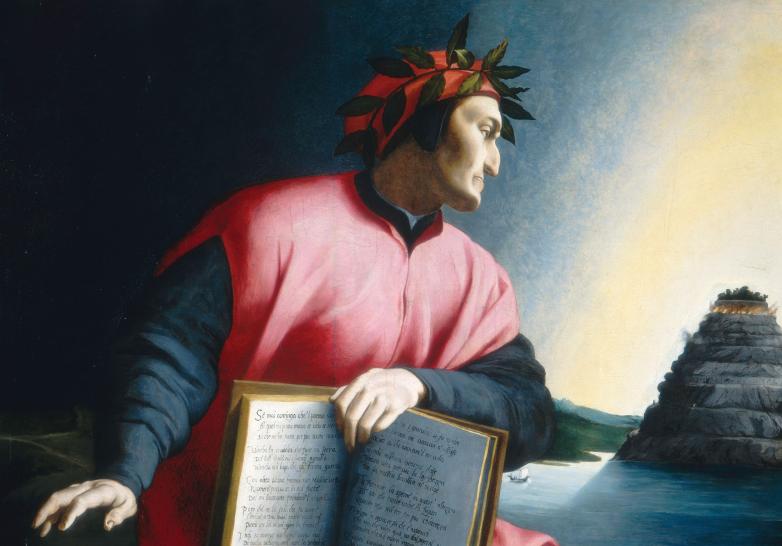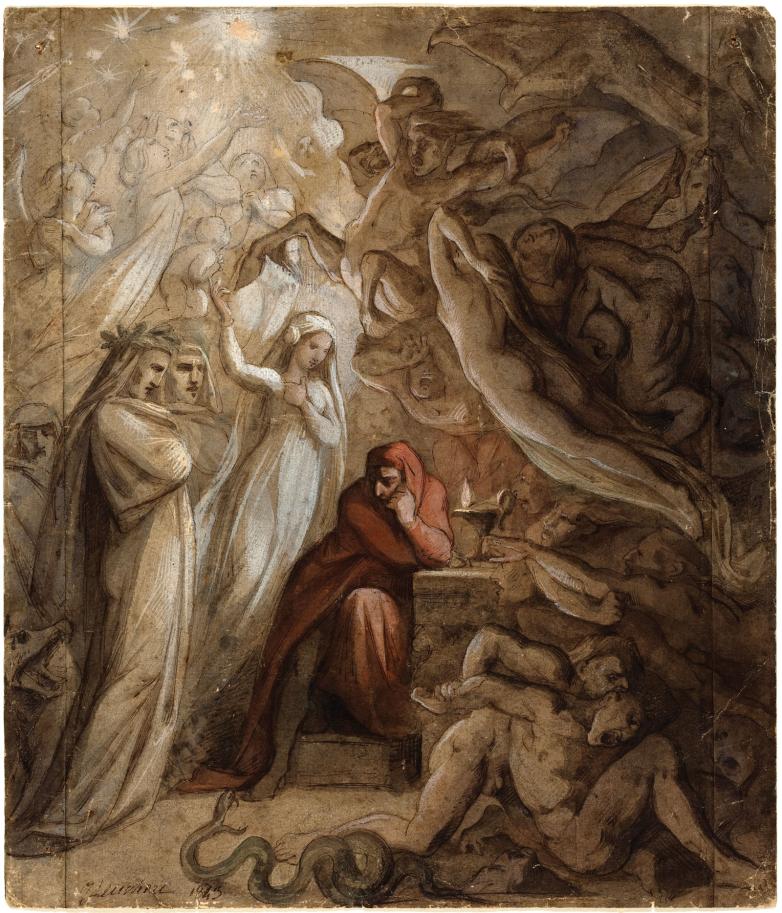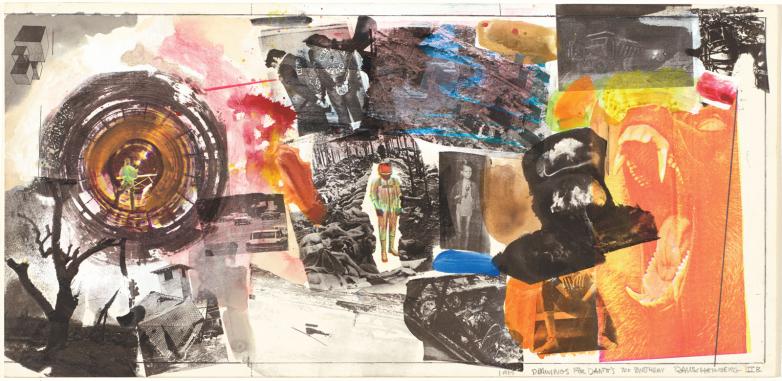Visions of the Underworld Inspired by Dante’s The Divine Comedy on Show
The National Gallery of Art in Washington, DC, descends into six centuries of depictions of Hell
Centuries after its creation, the literary masterpiece by Dante Alighieri (1265–1321) remains widely read and relevant to modern society. The epic narrative poem The Divine Comedy, called “La Commedia” in Italian, describes one man’s harrowing and transformational journey through the afterlife—Hell, Purgatory, and Paradise—told in 100 cantos, or sections. Dante is guided first by the ancient Roman poet Virgil, and then by his beloved muse, Beatrice. (The actual nature of their relationship cannot be verified. Each went on to marry others; Beatrice Portinari died at age 25.)
Composed in the vernacular language of Florence instead of the customary Latin preferred for literature of the period, the text was more accessible to the masses rather than only the highly educated. It is regarded as one of the most significant literary works of the Western world and one that helped establish the modern Italian language.
Courtesy National Gallery of Art, Washington, Gift of Mrs. John W. Simpson
The year 2021 marked the 700th anniversary of Dante’s death, a milestone for Dante scholars and devotees. But I admit that my interest in Dante and his anniversary year was driven more by my love of a particular National Gallery of Art painting than an admiration for the writer’s innovative and timeless texts, which I have come to greatly admire. The sixteenth-century Allegorical Portrait of Dante spent decades in Gallery storage (exile!), a victim of changing taste and lack of appreciation.
The central theme of our painting, as suggested in the manuscript open to canto XXV of Paradise from The Divine Comedy, is Dante’s desire to return from exile to the Florence of his birth after many years, and his sense of longing for what was. A nearly identical painting in the shape of a lunette by Agnolo Bronzino that surfaced in Florence some years ago, but is now in a private collection in Russia, is considered the primary version of the two. The lunette was likely painted for a sixteenth-century Florentine banker, Bartolomeo Bettini, an outspoken critic of the ruling Medici family. The patron Bettini and the painter saw the parallel between the plight of political exiles from the early 1500s and the fate of Dante.
The Allegorical Portrait of Dante depicts the poet sitting on a rocky outcrop. His distinctive profile, cheekbones, and cap serve to identify him. He turns to look across the water at small figures walking along the rocky, elevated circles of Purgatory, ultimately crowned by the Earthly Paradise/Garden of Eden. Dante’s left hand holds the open manuscript while the other hand hovers over the Cathedral and Bell Tower of Florence beyond his grasp, illuminated by the flickering flames of Hell below. Best known as a poet, Dante also had political ambitions. Accused of corruption and financial wrongdoing, he was exiled from Florence twice: first, for two years in 1302, after refusing to pay a fine. He was later banned for life and threatened with execution if he returned. For the next 20 years or so, he lived a roving existence, traveling from place to place at the invitation of friends or fulfilling diplomatic missions at the behest of others. It is thought that he composed The Divine Comedy during this time. In 1321, Dante died of malaria in the city of Ravenna on the Adriatic Coast.
In the legible painting text, Dante speaks bitterly of the Florentines who have banished him, calling them wolves, but imagining a time when he can return to the fold and be recognized. In translation, it reads:
If ever it come to pass that the sacred poem to
which heaven and earth have so set hand that
it has made me lean for many years should
overcome the cruelty which bars me from the
fair sheepfold where I slept as a lamb, an
enemy to the wolves which war on it, with
changed voice now and with changed fleece
a poet will I return, and at the font of my
baptism will I take the crown; because there
I entered into the Faith that makes souls
known to God; and afterward Peter, for its
sake, thus encircled my brow. Paradise, canto XXV, lines 1–12
This theme took on resonance during isolation in the years of COVID-19, from which we are only now emerging, and it became even more pointed with the scenes of devastation and ruin being broadcast from Ukraine.
A new presentation of the painting seemed in order. Many artists over the centuries have depicted Dante’s Inferno to explore questions of morality and spirituality, create metaphors for social and political issues, and reflect the human condition. Inferno, the first of the three books of The Divine Comedy, is a journey through Hell, filled with vivid descriptions of punishment and suffering. Dante’s evocative language continues to inspire artists to illustrate or reimagine his nightmarish scenes.
All twenty-two works on view through July 16 in Going through Hell: The Divine Dante are from the National Gallery’s own collection. We are fortunate to hold many objects, primarily from the Prints and Drawings collection, which relate to the writer and his work. Our library’s Rare Book Collection includes early printed and beautifully illustrated editions of the Commedia. Auguste Rodin’s The Thinker had its origin in Dante’s Hell, as imagined for Rodin’s door of The Gates of Hell. Never installed in the sculptor’s lifetime, this single bronze figure went on to be recognized as one of the greatest sculptures in European art. Works from well-known artists such as William Blake and Robert Rauschenberg are installed near evocative images by artists that are known to only a few, like Bartolomeo Pinelli, William Etty, or Béla Szabó, all inspired by Dante. It shouldn’t be a surprise that many artists responded to and illustrated scenes from the Inferno, or Hell. While the hope of purgatory and the pleasures of paradise are always appealing, seeing the punishments of Hell is the stuff of nightmares from which we cannot look away! Dante’s genius continues to reach out, and his writing remains relevant to our tumultuous time.



















